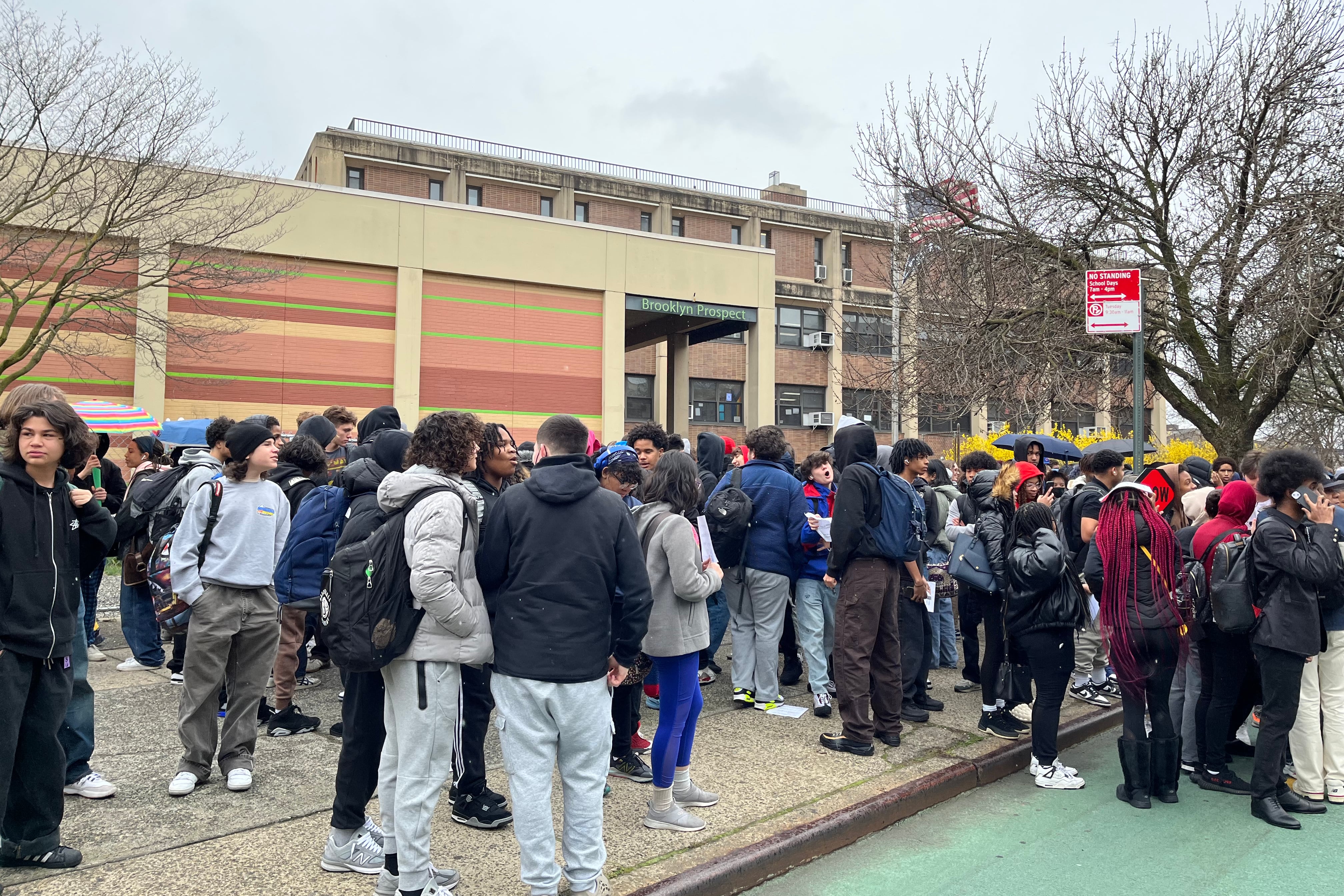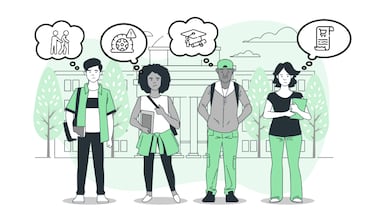A Brooklyn charter school network’s plans to eliminate its team handling student behavioral and mental health challenges has riled its community, prompting a walkout by high schoolers earlier this week and a flurry of emails from the administration trying to dampen concerns.
By midweek, network administrators at Brooklyn Prospect Charter School began visiting its schools and reassuring employees that a majority of the impacted staff would be offered a transfer into new roles within the network.
For some students and teachers, the uncertainty introduced by the restructure comes at a difficult time, as students grapple with heightened behavioral challenges and mental health crises tied to the effects of the pandemic. But at the core of their concern also lies a fear that the network might drift away from its founding tenets: racial, cultural, and socioeconomic diversity and equity. Teachers and students noted that most of the positions slated for elimination are held by people of color.
The network, meanwhile, contends that the changes come for just the opposite reason — to make their staffing model more equitable.
The administration charged that “an artificial divide between culture and instruction” had resulted in “predominantly Black and Brown staff members in roles without a clear pathway of growth and career progression,” according to an email to staff obtained by Chalkbeat. These staffers have borne the brunt of disciplining students rather than teachers, who are overwhelmingly white, the network said.
Tresha Ward, CEO of the charter network, said that the structural shift will improve hiring practices, creating a stronger pipeline and retention of teachers of color.
“Historically, these responsibilities have been divided in our organization, with student management falling disproportionately on Black and Brown culture staff and instruction falling to a majority white teaching staff,” Ward said in a statement. “In practice, this change opens new opportunities that were not previously available to many of our colleagues and creates transfer opportunities for the majority of staff who are impacted by these changes.”
While a “small number” of staffers will be let go due to funding issues related to enrollment drops, others are expected to transition into new roles, Brooklyn Prospect officials said. A spokesperson for the network said it expected to have roughly 27 fewer positions in the coming school year, but a majority would be phased out through natural attrition.
It’s not an issue that’s unique to Brooklyn Prospect — schools across the city and the country have experienced enrollment declines in recent years, and the impending expiration of some COVID relief funds poses the threat of a widespread fiscal cliff. Public schools throughout the city will continue to face difficult decisions about staffing and spending, with at least one charter school forced to shutter its doors. Still, Brooklyn Prospect’s equity mission and initial communication stumbles have spurred a particularly passionate response.
News that some staff positions will be eliminated fueled critiques over the network’s spending, with teachers and students questioning the opening of a new middle school in Sunset Park as well as building construction and renovation elsewhere.
The friction isn’t necessarily bad, but the next steps are critical, said Halley Potter, a senior fellow at The Century Foundation who has studied educational policy and school equity, particularly examining the role charter schools can play in school integration.
“The hallmark of a good diverse-by-design school, or any school that is serving a diverse community well, isn’t avoiding conflict, but how that conflict is navigated and what the conflict produces,” she said. “The real test will be if the commitment to some of the shared values can create a really positive dialogue and some opportunities for reflection.”
Student protests, concerns among staff
Teachers said discussions last week began with a rocky start. Several expressed frustration with central leadership — referred to within the network as “treehouse” — alleging officials had weaponized inclusive language to justify the elimination of positions held predominantly by staff members of color in their initial email.
When teachers responded to news of the restructuring with questions, they say the email listserv was shut down, restricting their ability to communicate with staff across the network. Carolyn Mshooshian, a ninth-grade English teacher at Brooklyn Prospect High School, said the response was “disappointing.”
The network declined to comment when asked about the listserv.
As frustrations mounted, students at the high school hastily organized a walkout on Tuesday, with plans to continue their protest throughout the week.
“We’re just trying to make a difference — this is our future,” said Zaviahn Scott, a ninth grader and one of several students who organized the walkout. “We’re a family, we’re a community, and we have to stick together.”
Campbell Dietz, a junior, called the Youth Development and School Culture, or YDSC, team “the disciplinary parent” of the family, adding “they’re never harsh with us.” Teachers and students say the staff members help navigate disciplinary issues and establish a positive school environment. If a student went to the bathroom during class and didn’t return for 15 minutes, one of the staff members might help find them, one teacher said.
One network teacher said they felt more at ease after Ward spoke to staff about the changes, noting the administration had apologized for unclear initial communications and assured them that most staff members in eliminated positions would remain employed within the network if they expressed interest in the new roles.
But some others still remain skeptical.
“There’s definitely been a loss of trust for all of us,” the teacher acknowledged. “With some people, that is going to take them longer to regain.”
Response demonstrates ‘democracy in action’
Potter noted there’s a longstanding equity debate over whether certain education issues should be handled by designated teams or positions. She drew a parallel to discussions over whether a chief integration officer should be instituted at the city’s department of education.
“One of the first things that comes up is that we don’t want this work to be siloed, we need this to be everyone’s work,” she said. “Now the frustration ends up being … well, sometimes we end up with neither. There’s not a team that is owning this and there’s not a culture that’s making this everyone’s work.”
Potter noted there’s merit to both arguments, adding it hinged on open communication and execution.
Still, students and teachers feared the pending shakeup could mean functionally losing people they’ve come to rely on. And for students who have developed close relationships to YDSC staff, even if they transition into new roles, it’s unclear whether they’ll remain at their school.
A spokesperson for the network said schools will look to limit how many staff are transferred to other schools within the network, but added the specifics depended on how the transfer process played out.
The spokesperson also noted the network’s new middle school in Sunset Park would help funnel more enrollment into the high school, where numbers had lagged recently. It would also create new positions to allow affected staff to transition into, the spokesperson said.
In some ways, Potter said, the passionate response from students might represent the success of the network’s model.
“Although a difference of vision with leadership is certainly there,” she said, “that might be proof of Prospect Schools having created the type of school environment where students are empowered and critical thinkers, and pushing on these very questions of diversity and equity.”
At some other schools, if a similar change were proposed, the conversation might play out differently, she added.
“It sounds to me like diversity and democracy in action, in what could be a really good way.”
Alex Zimmerman contributed reporting.
Julian Shen-Berro is a reporter covering New York City. Contact him at jshen-berro@chalkbeat.org.








